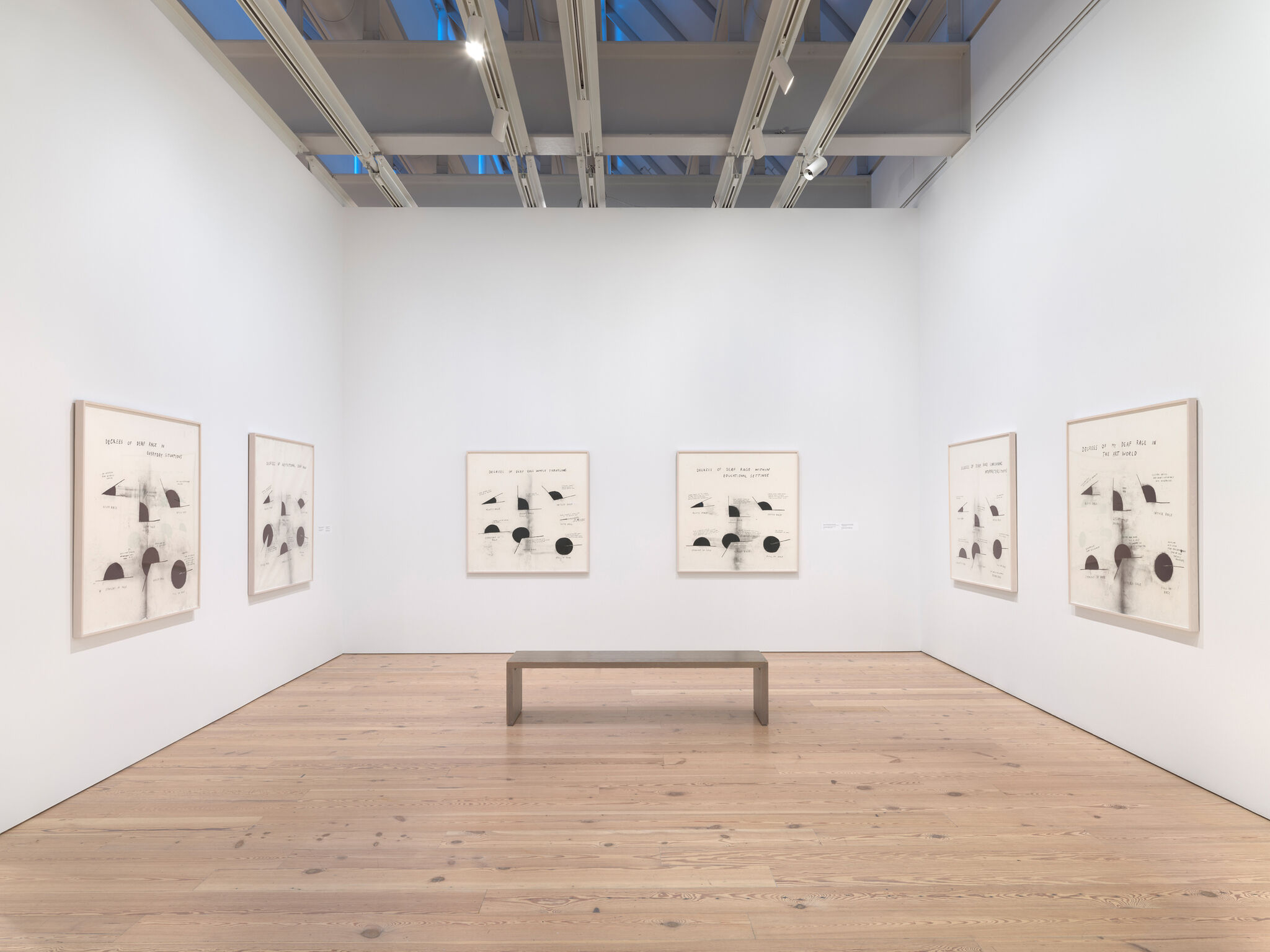Verbal Description: How to Measure Loudness and How to Measure Quietness, 2014
Jan 28, 2025
0:00
Verbal Description: How to Measure Loudness and How to Measure Quietness, 2014
0:00
Narrator: How to Measure Loudness and How to Measure Quietness are two dry pastel and pencil drawings on paper. Each work measures 38 inches high and 50 inches wide, and they are displayed next to each other. Both drawings are done in blue pastel and resemble decibel charts, which reflect the intensity and volume of certain sounds. The general form that the markings in each drawing take are conical, like triangular flags that are wider at the top. In an interview with Crack Magazine, Christine Sun Kim reflects on her artistic connection to sound, stating, “I’m interested in how people look at me as a deaf sound artist [...] I like to think about sound as social currency, sound as norms, or collective reactions, concepts, ideas.”
In How to Measure Quietness, Kim has written the title in small, capitalized blue letters at the top of the page. Beneath this are ten examples of quietness, beginning with the quietest at the top to the least quiet at the bottom. The examples include the silent treatment, a shrug, and a grand pause. The chart is made up of two columns, one on the left where a certain number of “p” letters are written, and one on the right with the example that expresses that level of quietness. Varying amounts of the musical symbol “p” for “piano”, when written in musical notation, means that something should be played softly. The number of “p” symbols next to each example decreases as the chart goes down and gives louder examples. The quietest example is marked as “ppppppppp”, while the loudest example is marked as “mp”, or “mezzo piano”, meaning medium soft. Some examples include “pppppp”, which expresses the quietness of heartburn, and “pp”, which expresses the quietness of a shrug.
In How to Measure Loudness, Kim has drawn another chart with the same structure. At the top of the page are the words in the title, and like its neighboring work, two columns make up the chart. In this chart, the left column is made up of certain amounts of the musical symbol “f” for “forte”, or loudness. The right column has examples that express each level of loudness. This work follows the same form as the other, although the chart moves from loudest to quietest. Some examples include the loudness of a hot sweaty concert, marked as “fffffffff’, or the loudness of a subway announcement, marked as “fff”. Other examples of loudness include a high pressure shower head, feedback, or an argument in limited ASL. In both charts, the musical notation column is written in thick blue lines that slant downwards. The example column is made of the same small, capitalized font as the headings.

